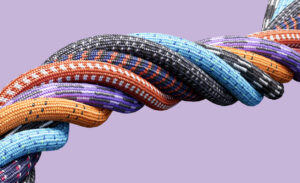 A Modern Learner is someone who needs to learn fast in an ever-changing environment, and who will access a wide variety of resources to get answers.
A Modern Learner is someone who needs to learn fast in an ever-changing environment, and who will access a wide variety of resources to get answers.
The key to designing for modern learners is to quickly connect them to the best learning content at their most likely moments of learning need. Everyone learns differently, we don’t use the same tools and we look for content through different channels.
I recently came across a book, Designing for Modern Learning by Crystal Kadakia and Lisa M.D. Owens, and was immediately sucked in by their Learning Cluster Design Model. This model is easy to digest and will elevate your Learning & Development game!

To meet the needs of the modern learner, we need to evolve from designing ‘one and done’ training courses to designing learning clusters. Learning clusters surround learners with meaningful content focused on a particular on-the-job capability gap. Learning cluster assets are strategically selected and include social, formal and immediate touchpoints.
- Social involves a level of interaction with other people. This can be mentoring/coaching, incentive programs, discussion boards, and critical work experiences.
- Formal experiences with a clear start and end point such as e-learning, instructor-led training, assessment, and blended learning.
- Immediate assets include websites, TedTalks, podcasts, reading lists, quick reference guides and e-learning.
To design a learning cluster:
- Work with the business to identify a capability gap. You will build a learning cluster to address this gap.
- Name the learning cluster and develop a strategic performance objective for the cluster that ties to business objectives.
- Identify and refresh current learning assets that meet the cluster objective.
- Curate and build additional learning assets ensuring there is at least one social, formal and immediate touchpoint.
Learning clusters enable modern learners to learn whenever, wherever, and however they want or need to learn.





